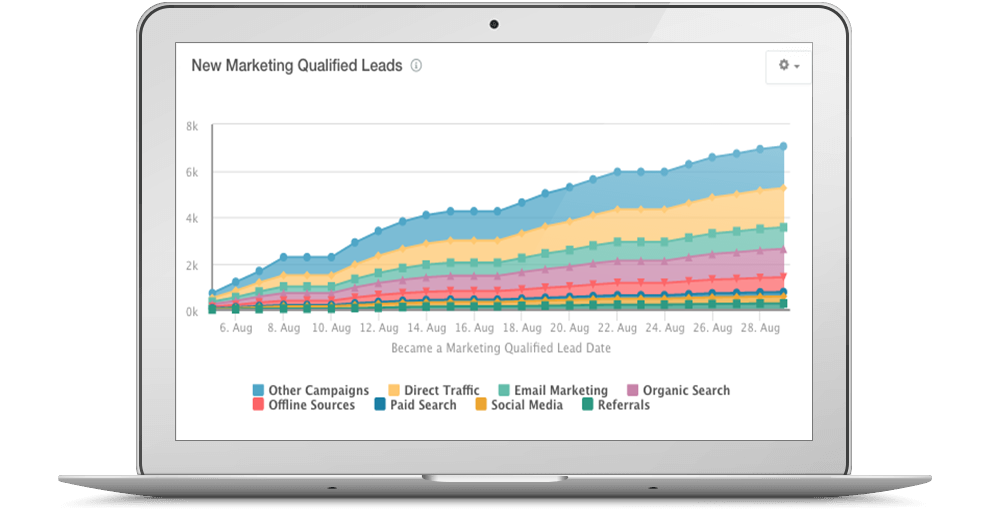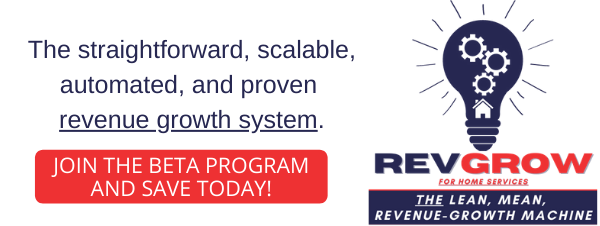
Did you know that 97 out of 100 people start online when learning more about a local company? (SEO Tribunal)
This means if you’re running your business without a modern website, you’re falling by the wayside.
You should have a productive, lead-producing home services website up and running if you want to ensure you’re not missing out on potential clients.
But… it isn’t enough to just throw up a website. You need a way to get people to your site. One of the best ways you can do this is through Google.

Getting your website to show up in the search engine results when people are searching for your services is an effective way to funnel in a steady stream of leads.
However, you need to ensure your website is popping up on the first page of Google, otherwise, potential prospects won’t know you’re there.
In fact, only 10% of Google users bother checking out the second page of search results. (ProtoFuse)
If you’re wanting to make sure your home services website lands on page one of Google so you can reel in leads, then follow our guide below!
 The Science Behind Search Engines
The Science Behind Search Engines
Google is powerful. They’re the leader in the search engine industry by a long shot. Every second, there are over 40,000 searches made on the platform. (Internet Live Stats)
If you can get into Google’s good books, you’ll be able to get in front of potential customers.
So, how can you get to the first page of Google’s search engine results?
The simple answer is: make your website valuable to your prospects.
 Simply put, the higher your website’s perceived value is, the higher the odds are that it will rank higher in the search results. Google wants to show useful websites first.
Simply put, the higher your website’s perceived value is, the higher the odds are that it will rank higher in the search results. Google wants to show useful websites first.
Here are a few ways you can make your website more valuable to rank higher:
- Add specific keywords to various places on your website
- Build content that’s valuable for humans, not Google (this will actually make Google like you more)
- Emphasize your location
- Focus on updating and maintaining your Google listing regularly
While you don’t need to master all of these right away, here are a few more factors you can work on to increase your Google rank:
- Link relevance
- Use relevant phrases and keywords
- HTTPS
- Topical authority
- Social sharing
- Domain age
- AMP
- Page layout
- Spelling and grammar
By understanding the main factors that drive your ranking, you’ll be able to make more informed decisions. When you make adjustments to your site, you ensure every step is SEO-friendly.

Embracing the SEO Struggle
While your main path to elevating your search engine's result is through keyword ranking, this can be a long, difficult process.
In order to keep ranking higher, you need to focus on continually creating new content. Crafting a plan to invest in a content management system and a content schedule will help ensure you succeed in being consistent.
It’s easy to forget about content creation, but it’s one of the most important aspects of bringing in new leads.
It’s important to note that rankings are always changing. With SEO, there really isn’t a point in time when you hit the mountain peak and can finally stop. It’s a constant battle to stay on page one of the search engine results. However, the more effort you put in, and the longer you work at it, the easier it will be to maintain your position.
 How to Choose Your Target Keywords
How to Choose Your Target Keywords
So, how do you pick your target keywords?
Think about your customers. Keep in mind that you’re trying to solve their problems. You need to spend some time thinking about what they’re thinking about.
Refer back to your buyer personas. If you haven’t made them yet, then make sure you create them before working on your SEO. Having your buyer persona crafted is an important foundation for all of your marketing efforts.
If you want some help building effective buyer personas, check out our blog post here.
Once you understand who your target audience is, you can begin to understand what they’re searching for. What kind of problems do they have? What are their major pain points? Get into the mind of your audience and ask the kind of questions they would ask.
Next, you’ll want to use the proper software to find out what your audience is searching for. Here are the top 3 SEO tools on the market:
Using Topic Clusters
When it comes to crafting content to boost your search engine results, it’s easy to just pump out random articles and blog posts over time. However, this isn’t the most effective way to put out content.
Rather, you should create topic clusters.
This is a group of interlinked pages on your home services website that revolve around different angles of the same topic.
- You would start with a core page called a pillar page. This page uses short-tail keywords in a generalized subject.
- Then, you’d link out to cluster pages that focus on long-tail keywords.
- Finally, you’d link cluster pages to target pages which would be your services.
For instance, if you’re a plumber, you could create a topic cluster: “Fixing Leaks”.
Then, you could create a few articles that link to that pillar article. A few sub-topic clusters which link to the original article could be:
- Fixing Leaks in the Bathroom
- Preventing Leaks
- Fixing Leaks on a Budget
Then, from these clusters, you could link to your leak repair services.
How to Emphasize Location
Most businesses in the home services industry don’t need to reach people all around the world. You really just need to reach the people in your local area.
This means you need to use a local SEO strategy to make sure you’re pulling in local prospects.
Search engine optimization for local marketing is called local SEO. It’s the specific practice of optimizing your website SEO to be found by nearby prospects.
Local SEO is different in that it always takes into account the searcher's proximity to their desired result. For example, searching for “best HVAC near me” will show you a list of highly-rated HVAC companies within a few miles of your location.
Google determines local search rankings through 3 main factors:
1. Relevance: Google’s goal is to connect searchers with the best answers possible. So when someone searches for a nearby Impact Windows company, they get the best recommendations.
You should ensure your Google My Business listing is up-to-date and accurate to boost your odds of showing up in the local search results.
2. Distance: The proximity of the searcher is a major factor Google takes into consideration when determining what websites to show a searcher.
Make sure your address and other relevant contact information is stored in Google My Business listing and other directories on the internet.
3. Popularity: Google also takes into account just how popular your business is. How well-known are you? Google calculates this by looking at directories and also online reviews to grade your online presence.
Start asking your clients for reviews. Both your overall star rating and the number of reviews you have online will help determine your local search rankings.

Speaking Google’s Language
Your main goal should be to please your audience. Make sure you’re speaking their language. However, you still need to consider Google’s love language.
Their love language includes your title, headers and body, meta description, and title tags:
Title Tag: The first thing a Google searcher will see is your blog post title. This is called the “title tag”. Make sure you place your keyword in the first 60 characters.
Body & Headers: Put your keyword into the headers and subheaders of your blog posts. Don’t cram them in to make it sound awkward, though. Make it natural.
Before starting a new blog post, you should be thinking about how your keyword will fit naturally into your title, body, and headers.
Meta Description: Make sure to put your keyword into the meta description. This is the little snippet of copy in your search result that gives searchers a little more information about the web page.
Remember to keep your meta description engaging, readable, and even include some basic copy tactics in there to make it intriguing.
URL: Another thing Google loves is your blog post’s URL. The content in your URL helps Google understand what your blog post is all about.
Make sure you place your keyword close to the front of your URL.

Need More Marketing Help?
Whether you’re in home repair, HVAC, plumbing, impact windows, or any other home improvement industry, you know it’s not always easy to maintain a steady stream of clients.
If you want to get your home services website to page one on Google, so you can tap into a well of continuous leads then remember to follow the tips above.
For more help on how you can optimize your online marketing, check out our article called 11 Mistakes You’re Making With Your Home Services Marketing.
In the article, you’ll learn several mistakes you could be making when marketing your home services business.








.jpg?length=600&name=045%20-%20YouTube%20Cover%20Art%20(Video).jpg)
No Comments Yet
Let us know what you think